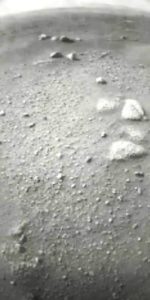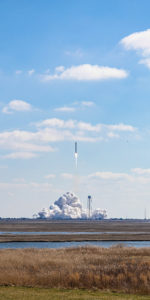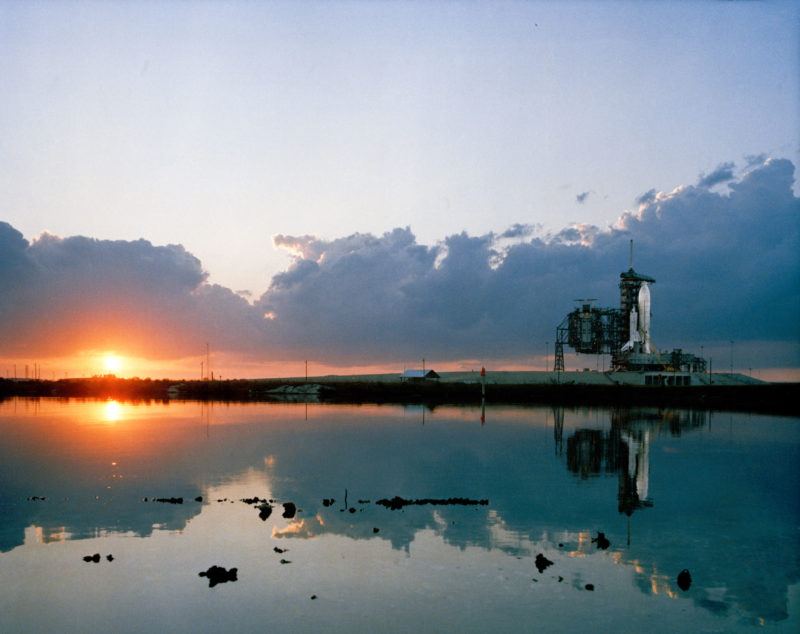
This spring marks 40 years since the Space Shuttle Program finally broke the shackles of Earth with the inaugural test flight of the orbiter Columbia on STS-1. Over a period of a little more than two days in April 1981, veteran Gemini and Apollo astronaut John Young and “rookie” spacefarer Bob Crippen launched from historic Pad 39A at the Kennedy Space Center (KSC) in Florida, piloted America’s first shuttle into low-Earth orbit, completed 36 circuits of the Home Planet and returned to an unpowered “deadstick” touchdown at Edwards Air Force Base, Calif. It was the start of a new era of human exploration in a reusable spacecraft which would demonstrate its remarkable capabilities over 135 missions before its final swansong in July 2011.
But before STS-1 could begin, exactly 40 years ago today, on 20 February 1981, Columbia’s three Space Shuttle Main Engines (SSMEs) were fired for 20 seconds on the launch pad. It was part of a final series of critical tests to ensure that America’s newest and most complex flying machine was ready to go.
Known as the Flight Readiness Firing (FRF), these exercises were conducted before the maiden voyages of all five shuttles: Columbia, Challenger, Discovery, Atlantis and Endeavour. And with Challenger put through two FRFs ahead of her first mission, and Discovery also performing the second FRF of her career in August 1988 before her STS-26 Return to Flight (RTF), no fewer than seven of these dramatic tests were performed between February 1981 and April 1992.
The purpose of the FRF was to impose launch conditions on the cluster of engines, as well as testing the suite of Auxiliary Power Units (APUs) in high-speed mode. Visually and acoustically, it was perhaps the closest analog to a launch, without actually launching the vehicle.
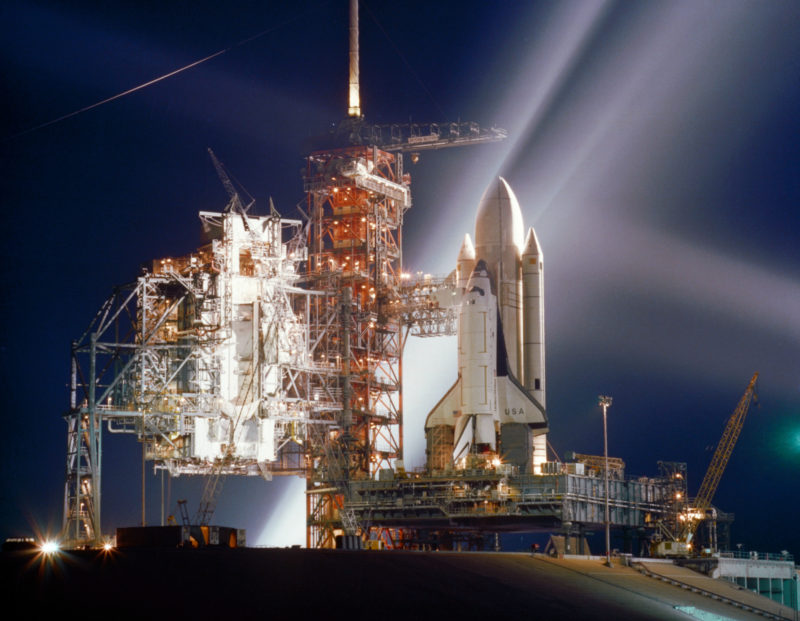
The STS-1 “stack”—which comprised Columbia herself, bolted to her twin Solid Rocket Boosters (SRBs) and bulbous External Tank (ET)—had been rolled out from the Vehicle Assembly Building (VAB) to Pad 39A at daybreak on 29 December 1980.
Formally known as the Wet Countdown Demonstration Test (WCDT)/Flight Readiness Firing (FRF), the final steps on the launch pad to ready STS-1 for flight were meant to mimic the countdown operations as closely as possible. A fundamental goal was to “verify the capability of the launch facility to provide propellants to the shuttle under launch conditions”, with the ET/SRB combo “exposed to the same thermal environment they will experience during STS-1 launch preparations”.
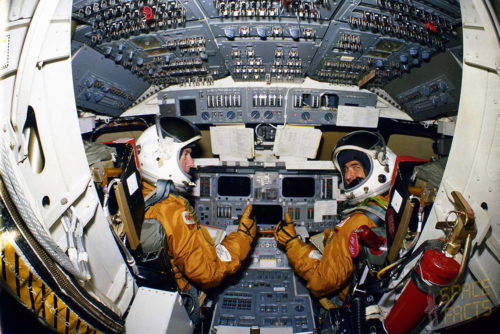
Elsewhere, all Main Propulsion System (MPS) control elements were “required to maintain pressure in the External Tank and in the main engines during the test firing, as they would during an actual launch”, whilst the ability of the APUs, hydraulics and flight controls had to verify their ability to throttle the SSMEs at between 94-100 percent of rated thrust and “gimbal” them to effect steering.
By dawn on 20 February 1981, the six-day-long WCDT was approaching its conclusion and would culminate with the FRF. In readiness for the test firing, launch controllers started the countdown clock at T-53 hours, when they powered up the SRBs, the Ground Support Equipment (GSE) and the shuttle’s on-board systems. In the final seconds, NASA commentator George Diller’s calm tones described the event for his audience. “The Solid Rocket Booster hydraulic units are activated,” he reported. “The countdown now being conducted by the on-board computers, with the ground computer acting as backup.”
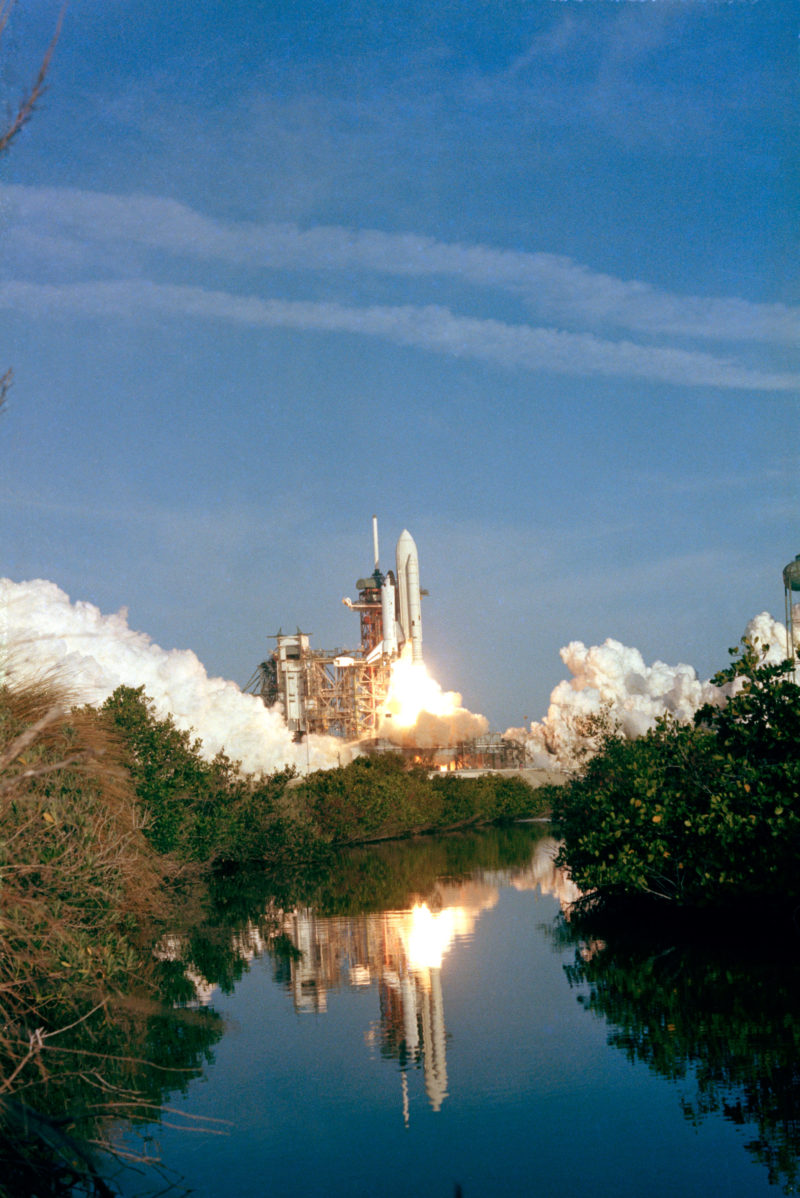
Four seconds prior to the simulated liftoff, Columbia’s SSMEs roared to life at 120-millisecond intervals—“We have Main Engine Start,” exclaimed Diller, “all three engines are up and running”—then reached 90 percent of rated performance within three seconds and hit 100 percent precisely at T-0.
As a thick pall of gray cloud obscured the shuttle, leaving only the tips of her wings and the Roman candles of the boosters clearly visible, the FRF proceeded to perfection. Three seconds into the burn, engineers simulated the retraction of the ET umbilical and the SRB hold-down posts, until eventually after a period of stable thrust from the SSMEs, shutdown commands were issued to the engines.
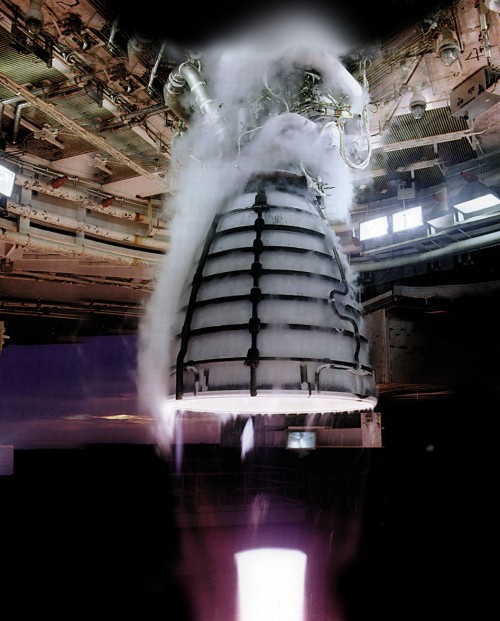
“And we have had shutdown, we have had shutdown of all three engines,” Diller noted. “A full 20-second burn, as expected.”
The test had gone well, with a couple of unanticipated issues. One of its aims was to evaluate and measure the effect of the “twang”—the amount of movement in Columbia, against the rest of the stack during the SSME start-up sequence—and in STS-1’s case this caused a forward shift by about 25.5 inches (64.7 cm).
That was within anticipated structural limits, but was still somewhat greater than the 19 inches (48.2 cm) predicted by the engineers. Additionally, the STS-1 FRF was notable in that the sparker-like hydrogen burn-off igniters were fired at the same time as the SSMEs, but post-test analysis led to a decision to initiate this process at T-4.4 seconds—ahead of Main Engine Start—on STS-1 and all future missions.
As outlined previously by AmericaSpace, not all FRFs went entirely according to plan, but each one fundamentally demonstrated the capabilities of the whole system before committing to flight.




